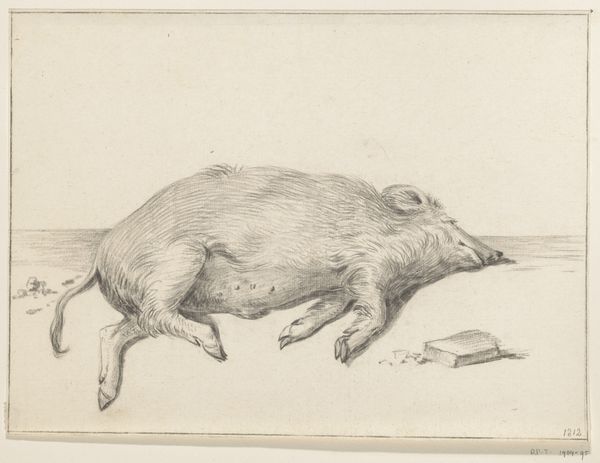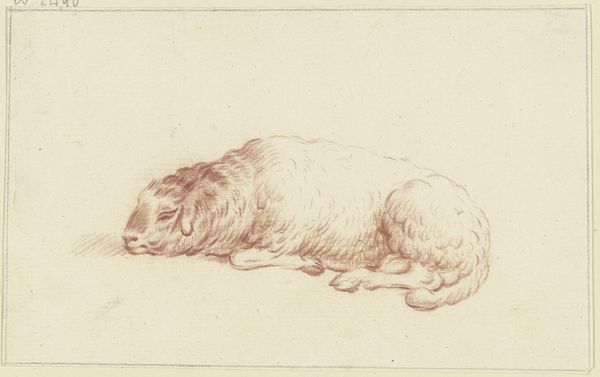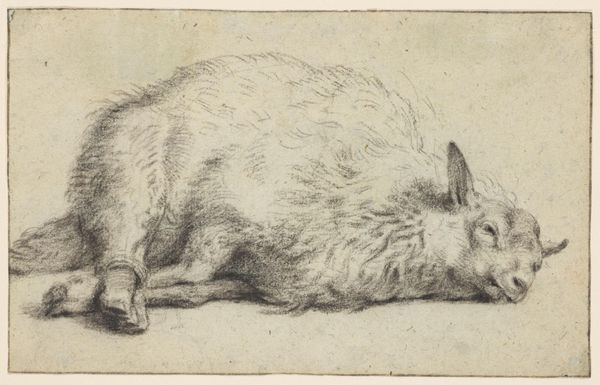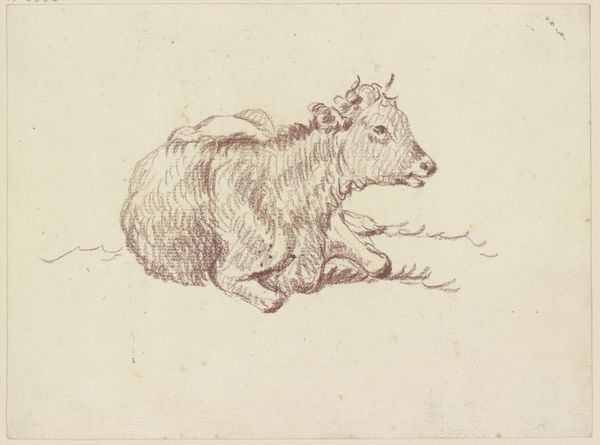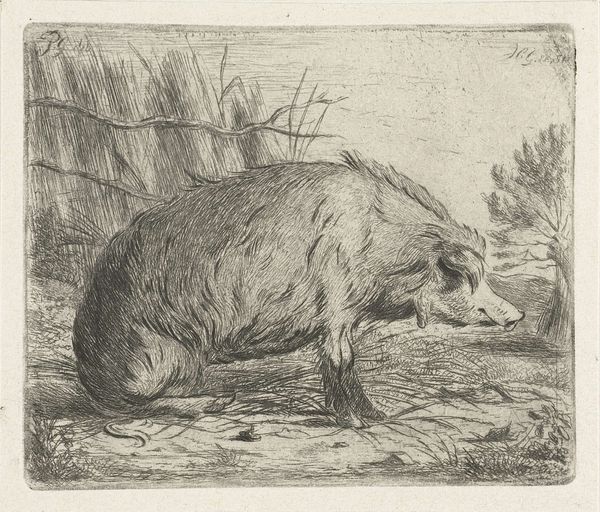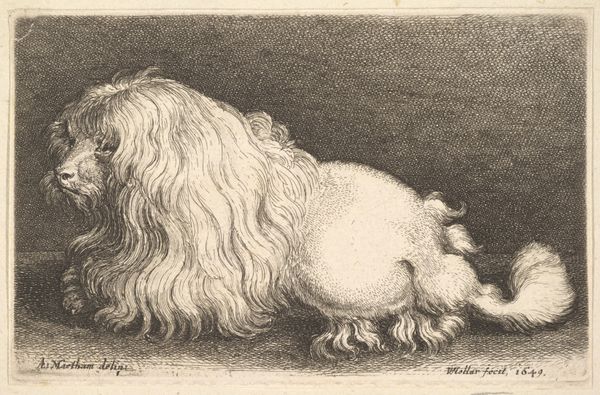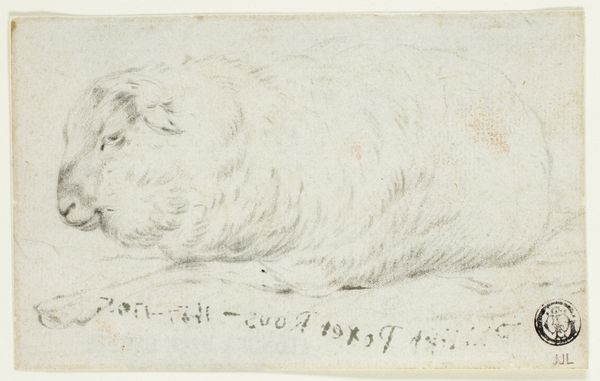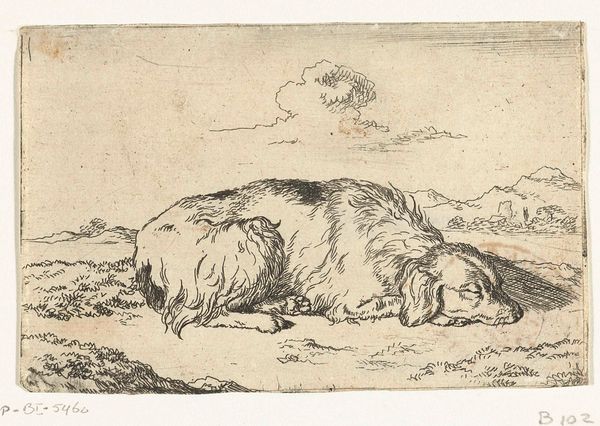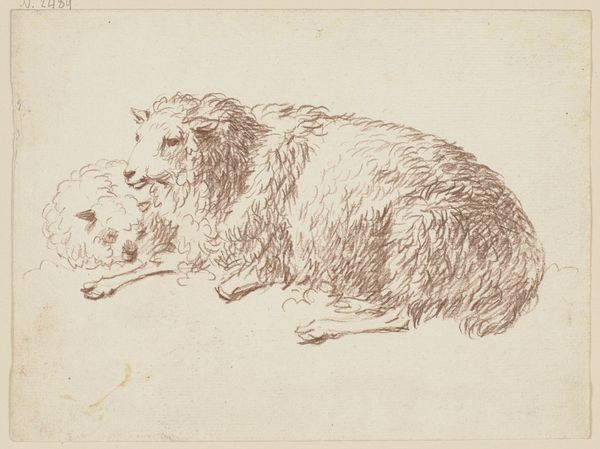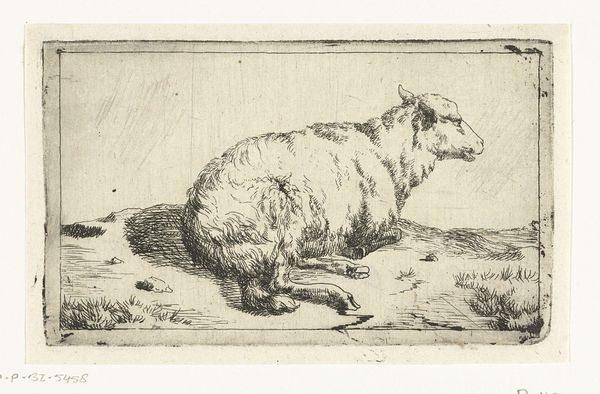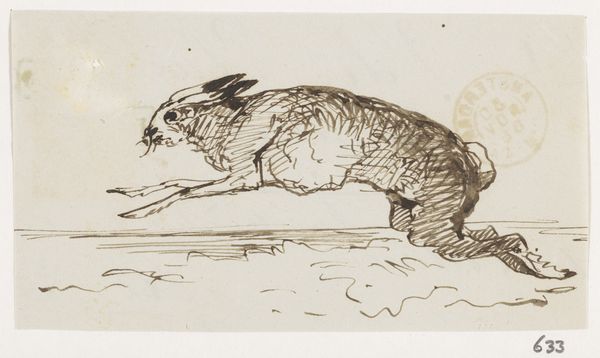
drawing, print, etching, engraving
#
drawing
#
baroque
# print
#
etching
#
engraving
Dimensions: Sheet: 2 3/4 × 5 1/2 in. (7 × 13.9 cm) cut on platemark
Copyright: Public Domain
Curator: Wenceslaus Hollar's etching, "Dead Mole," created in 1646, is now part of the Metropolitan Museum of Art's collection. What are your initial thoughts on this somewhat unusual subject, from an art historical standpoint? Editor: The creature strikes me as incredibly still. It feels very different than one of those dramatic Baroque scenes. The creature's smallness and finality are poignant, aren't they? Curator: It’s remarkable how Hollar uses etching to capture texture and form with such fidelity. Look at the granular effect he achieves on the mole's fur through varying densities of tiny etched lines. The structure feels complete. Editor: True, and a mole might represent several things in the collective consciousness: blindness to the superficial world, industry within the earth, hidden secrets brought to light by digging, but its posture suggests something more mournful, and final, perhaps about life itself. Curator: Perhaps Hollar, within the confines of a Baroque aesthetic, uses the animal as an allegory? His precise rendering speaks to a broader humanist impulse toward scientific observation, though that's expressed in miniature here, isn't it? A kind of Baroque naturalism on a modest scale. Editor: Well, considering natural symbolism, think of how often the earth itself and all its secrets has long been interpreted as maternal and generative. Hollar’s "Dead Mole" confronts this reading. I find its symbolic contrast quietly unsettling. Curator: I concur; this small image rewards sustained looking and a bit of theoretical probing. It balances aesthetic representation and philosophical weight through the simplicity of form and the nuances within Hollar's method. Editor: The piece leaves one with lingering questions. There’s an inherent fragility made manifest within the bold lines of his medium. Hollar asks us to remember what it is we bury.
Comments
No comments
Be the first to comment and join the conversation on the ultimate creative platform.
